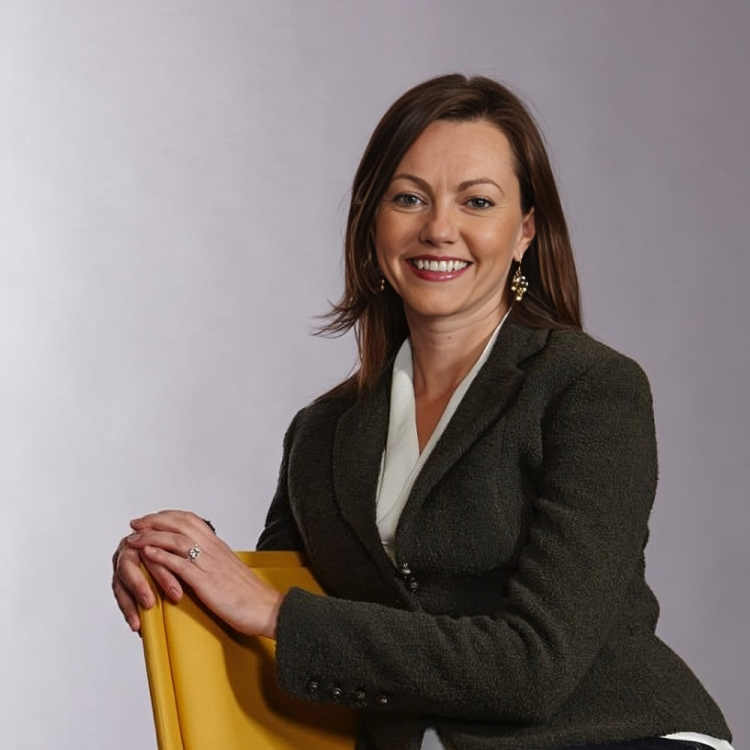Ready to launch your own podcast? Book a strategy call.
Frontlines.io | Where B2B Founders Talk GTM.
Strategic Communications Advisory For Visionary Founders
Conversation
Highlights
Building the Financial Backbone for a $1.5 Trillion Industry: Tab Commerce’s Journey
Most fintech founders target flashy consumer apps or enterprise software. Few look at the messy back offices of America’s restaurants—where outdated financial workflows drain profits from an already razor-thin margin business.
In a recent episode of Category Visionaries, Ty Wilson, CEO and Co-founder of Tab Commerce, shared how his deep understanding of restaurant operations led to building the first corporate card specifically for restaurants and a vision to transform the $1.5 trillion restaurant supply chain.
From Banking to Back-Office Innovation
Ty never planned to build a technology company. Growing up in a family that owned nine restaurants in Canada, his career trajectory seemed clear: “I was planning on going into restaurants pretty much my whole life,” he explains.
Instead, he detoured into investment banking. But when COVID hit, he returned to his parents’ home and witnessed firsthand the struggles of keeping their business alive—particularly the inefficient back-office operations.
“The restaurant back office is incredibly complex, incredibly unique,” Ty notes. “Restaurants are spending way too much time managing their spend.”
This observation became the foundation for Tab Commerce. But finding the right product-market fit wasn’t straightforward.
The 18-Month Search for Traction
What’s striking about Tab’s journey is how many iterations they went through before finding their winning formula. The founders quit their banking jobs “probably way too early,” then spent nearly 18 months building products and seeking traction.
“It was a very slow start for us,” Ty admits. “That first year and a half, it’s just like learning, hacking away at it, just trying to figure things out. Building with like no code tools and writing just very basic stuff.”
This period of experimentation was critical—and it’s a lesson for founders in any vertical. Tab initially launched with a bill pay/ACH product to streamline restaurant purchasing, but found it difficult to gain adoption.
The breakthrough came from obsessive market research.
Studying Success: How Ramp Inspired Tab’s Winning Product
“I spent a lot of that time myself just studying other companies,” Ty shares. “And I still do that like crazy. It’s just find a company I like and go super deep on it. You know, listen to everything they do. All their podcasts, study their website, all their press materials.”
This research led to a lightbulb moment when studying Ramp, the expense management platform. “I was super jealous,” Ty recalls. “I’m like, I really want a free product that makes money off interchange and no one actually pays for that.”
This inspiration led Tab to pivot toward a corporate card tailored specifically for restaurants. The insight was powerful: while horizontal financial tools weren’t meeting restaurants’ needs, a vertically-focused card could address their unique workflows.
The Case for Vertical Focus in Fintech
Tab’s approach illustrates a broader trend in B2B software: the verticalization of traditional horizontal products.
“I think every vertical will have their own spend management platform because every vertical has their own workflows and needs and go-to-market strategies,” Ty explains. “We don’t really see any of the Ramps or Brexes in the restaurant space at all.”
This vertical focus creates natural barriers to entry. Tab understands that restaurants operate on margins of just 3-10%, yet handle significant transaction volumes—a single location can generate $2-4 million in annual revenue and spend 95% of that across dozens of suppliers.
The complexity creates opportunity: “It’s a complete mess. It’s mostly offline. It’s paper checks, there’s invoices. It’s completely mess. And I think that we have a chance to really come in here and try to build the standard commerce layer.”
Relationship-Based Distribution in a Digital Age
Perhaps the most counterintuitive aspect of Tab’s go-to-market strategy is their rejection of typical SaaS marketing tactics.
“You tried all like the LinkedIn ads and stuff like that. It doesn’t work at all,” Ty says.
Instead, Tab discovered that industry associations provide the most effective distribution channel. They co-branded a card with the Texas Restaurant Association and even relocated their office to be five minutes from the association’s headquarters.
“Software sales has become super transactional. And I think that’s hurt the industries like restaurants and other sort of brick and mortar businesses because they’re very relationship based,” Ty observes. This insight led Tab to build a relationship-focused sales organization that prioritizes in-person interactions at industry events.
The lesson for B2B founders is clear: sometimes the most effective distribution strategies aren’t the most scalable or digital—they’re the ones that match your customers’ existing buying patterns.
Navigating Product “Landmines”
Another valuable insight from Tab’s journey is the concept of product “landmines”—seemingly obvious solutions that actually fail in practice.
“There’s different products that seem super intuitive and they seem like they’d be big, but are actually not,” Ty explains. He shares an example of trying to digitize chef-supplier ordering: “We said, oh, that should be digitized. You should bring that online. And it’s going to get a bunch of efficiencies. And then we go and talk to a bunch of restaurants, and it’s like, no way is that ever going to be online.”
This illuminates why many startups fail despite targeting real problems—they misunderstand how customers actually want to solve those problems. For Tab, extensive customer validation became essential before building new features.
Persistence as a Competitive Advantage
Perhaps the most important factor in Tab’s eventual success was simply staying alive long enough to find the right approach.
“The main reason I think that we’ll be successful once we get there is we just stayed alive during this process,” Ty says. “We’re sort of constantly at like six months of runway throughout the whole company’s history. And we just stayed alive and found our way to a good spot.”
This persistence paid off. Tab raised a $2.5 million seed round in July 2023, bringing their total funding to $4 million. They launched their card platform in late 2023 and have been growing rapidly since, with hundreds of restaurants now using the platform.
The Long-Term Vision: Transforming Restaurant Economics
Tab’s ambition extends far beyond just offering a corporate card. They aim to fundamentally reshape restaurant economics by building a comprehensive financial infrastructure for the industry.
“Our goal is to really kind of drive like a seismic shift in restaurant profitability,” Ty explains. “If you look at the restaurant industry, they’re the last B2B buyer in a global supply chain of commodities. They’re getting squeezed the most.”
By creating a platform that handles payments, credit, rewards, and commerce flows across the entire restaurant supply chain, Tab believes they can help restaurants capture more value and improve their chronically low margins.
The lesson for B2B founders is powerful: sometimes the biggest opportunities lie in the most overlooked, complex, and unsexy corners of an industry—like the restaurant back office. By deeply understanding industry-specific pain points and patiently iterating toward the right solution, founders can build transformative businesses in markets others ignore.
For Tab Commerce, that patience is beginning to pay off as they expand their vision from corporate cards to becoming the financial backbone of America’s restaurants.
Actionable
Takeaways
Study success relentlessly:
Ty shared he constantly goes deep on companies he admires, calling it "one of the best uses of my time." He studies everything from their podcasts to press materials, which directly inspired Tab's corporate card product after researching Ramp. B2B founders should identify "company crushes" and systematically analyze their business models, marketing strategies, and product innovations for applicable insights.
Vertically-focused products win over horizontal solutions:
Tab recognized that generic spend management tools don't work for restaurants' unique workflows. "Every vertical will have their own spend management platform because every vertical has their own workflows and needs and go-to-market strategies," Ty explained. B2B founders should embrace deep vertical specialization rather than building generic solutions, as vertical focus builds immediate trust with customers who want industry-specific solutions.
Strategic industry associations can solve distribution challenges:
Unlike conventional digital marketing tactics which failed ("LinkedIn ads... doesn't work at all"), Tab found success by partnering with restaurant industry associations. Ty relocated his office to be five minutes from the Texas Restaurant Association and co-branded a card with them. For B2B founders targeting fragmented industries, leveraging established industry groups can provide credibility, access to engaged audiences, and cost-effective distribution channels.
Relationship-based sales beats transactional approaches:
In an era of increasingly transactional software sales, Tab deliberately built a relationship-focused sales organization. "Software sales has become super transactional. And I think that's hurt industries like restaurants and other brick and mortar businesses because they're very relationship based," Ty noted. B2B founders should consider whether their target market responds better to high-touch, relationship-driven sales approaches rather than modern, low-touch methods.
Discover "landmines" through persistent market testing:
Ty revealed it took over two and a half years to gain meaningful traction, during which they encountered numerous "landmines" – seemingly intuitive product ideas that actually failed in practice. For example, they initially tried to digitize chef-supplier ordering before realizing the existing phone/text workflow was actually more efficient. B2B founders should rigorously test assumptions and be prepared to pivot from apparently obvious solutions that the market rejects.


























